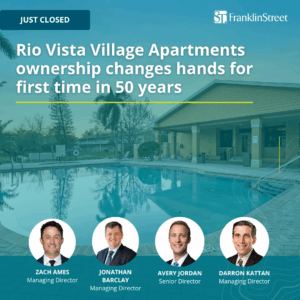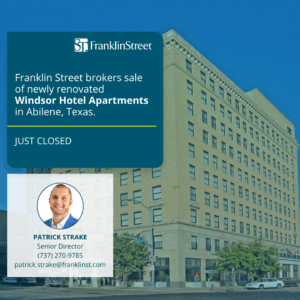Even amidst an e-commerce boom led by Amazon, Florida’s retail industry continues to expand. The state’s population is growing, driven as much by the relocation and opening of more corporate headquarters, manufacturing facilities and distribution centers in Florida’s business-friendly economy as by beautiful weather, retirees and tourism.
Experts project Florida’s population will surpass 21 million this year and 22 million by 2020. High-density areas include Miami-Dade and Broward along with Hillsborough and Pinellas counties.
Changing demographics drive retail trends
Yet this growing population’s demographics look quite different from the mostly 55+ retirees of years past. Florida’s urban areas are attracting younger residents than ever before. Millennials, ages 18 – 34, have recently overtaken the Baby Boomers as America’s largest population.
As this younger demographic begins to dominate the market, new retail trends place greater importance on convenience, healthy lifestyles and affordable, quality experiences. These trends are certainly evident in the expanding grocery and restaurant industry.
Grocers shopping Florida markets
A recent influx of grocers from other parts of the country moving into Florida, as well as the expansion of industry leaders like Publix and Wal-Mart, feeds retail growth throughout the state.
Samantha Berk Plate, director of real estate services at Franklin Street of Tampa, points to the impact of a reviving economy and resurgence of residential development on grocer expansion.
“We see Publix, the established king, entering high-growth residential markets where previously stalled community developments are back under way,” Plate said. “Trinity in Pasco County is a perfect example of this trend, with two new Publix locations opening within 1.25 miles of each other.”
Robert Granda, director of retail investment sales at Franklin Street of Fort Lauderdale, says the grocery wars of a couple of years ago have simmered down. But the closing of retailers like Sports Authority and K-Mart have left some big box spaces open in high-traffic areas—places where national grocers like Sprouts Farmer’s Market, Earth Fare, Lucky’s Market (Kroger’s small format store), Safeway and Aldi have been waiting for years to try. Phoenix-based Sprouts Farmer’s Market opened its first Florida store in Tampa in February and plans to open additional stores in Sarasota, South Tampa and Palm Harbor later this year.
A surge in mixed-use developments and pedestrian-friendly communities draws grocers with neighborhood market formats featuring grab-and-go meals, natural and organic options, made-to-order dishes that cater to the crowd stopping in between work, after-school activities and workouts.
“There’s an evolution in the way the younger generations shop,” said Granda. “It’s all about convenience and experiences. You can have Instacart or Shipt do your grocery shopping for you and have it delivered to your home. This generation wants to maximize their time. They want to walk more and enjoy life.”
Live, work and play in the urban core
The urban core concept is taking off in many Florida cities, including Miami, Tampa and St. Petersburg, where mixed-use development catches on quickly. More Millennials and Gen Xers are shedding long commutes for living and playing in the same areas where they work. What better places to walk, bike and spend more time outdoors than Florida’s urban landscapes?
“Florida is the third-largest state in the country with one of the fastest growing populations,” said Plate. “The urban core concept, with its changing demographics, is a major factor in retail growth. Downtown St. Petersburg is a perfect example; over the last 10 years, it’s shifted to a younger population—and retail is booming.”
A growing attraction, St. Petersburg’s downtown area teems with restaurants, residential and office spaces, and museums that bring people in droves. At the same time, downtown Tampa is undergoing a major renaissance, with Tampa Bay Lightning owner Jeff Vinik investing millions in redeveloping the urban core into a live, work and play community where residents and businesses make full use of the waterfront. The City of Tampa’s new Riverwalk connects restaurants, hotels, offices, tourism, events and cultural activities. Publix plans to open new urban markets in downtown Tampa and downtown St. Petersburg this year.
“When a new grocer enters an area, other retailers and restaurants tend to follow, driving up demand and real estate costs,” said Plate. “As more grocers and restaurants enter an urban area, the area becomes more livable, in turn attracting more demand for residential.”
Rise of restaurants brings menu of creative ideas
With the increase in supermarket and neighborhood market anchors, along with mixed-use communities, a rise in restaurants is following suit. Recent gastro-pub and food truck phenomena have evolved into local craft breweries, smaller fast-casual formats, and concept and one-off concept restaurants.
“Multiple restaurants in a grouping continue to draw crowds,” said Granda. “There’s still an allure surrounding a small spot that serves delicious custom food.”
The west coast of Florida continues to see an influx of quick-serve restaurants such as Smashburger and Fuzzy’s Taco Shop. The majority of any full-service restaurant growth is seen through the more casual dining concepts like Texas Roadhouse and Cheddars.
“Newer take-away concepts like Fit Life Foods, Papa Murphy’s and Doorside are popping up throughout the Tampa Bay market,” said Plate. “These off-premises consumption concepts demand less parking and solve complicated parking requirements on smaller development parcels.”
The contemporary, multi-use Brickell City Centre in East Miami features a menu of fast-casual restaurants to serve the foodie looking for organic, often locally sourced ingredients and multi-ethnic flavors. From lobster bar to sushi pub, the diverse flavors and styles are anything but dull. Ernie Els even has a wine bar here featuring dishes with a South African flair, and there’s a Latin American farm-to-table spot with a Uruguayan beach vibe.
Another prime example of mixed-use development in Broward County is Dania Pointe, where restaurants, shops, office spaces, entertainment and hotels—with a walkable main street—will converge on the site of an old wooden roller coaster. The new community, set to open this year, is located in Dania Beach, close to Fort Lauderdale-Hollywood International Airport, Port Everglades Cruise Port and I-95.
Granda advises clients to keep an open mind when it comes to vacant space, while adhering to a careful selection process with proper checks and balances.
“I tell them to be open to pop-up ideas and even unproven concepts,” said Granda. “There’s been a shift in our market. New concepts drive Millennials to the property. Sometimes the newest concepts are the best.”



